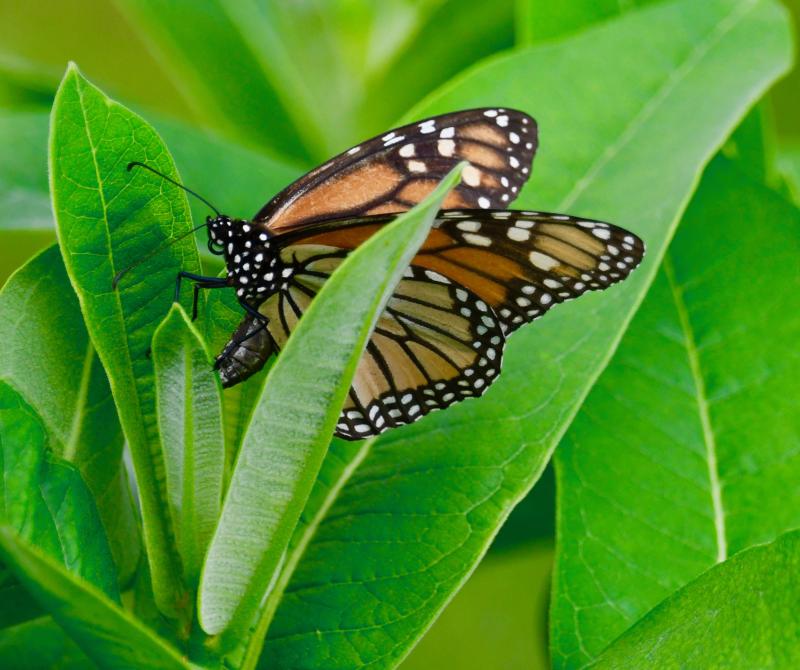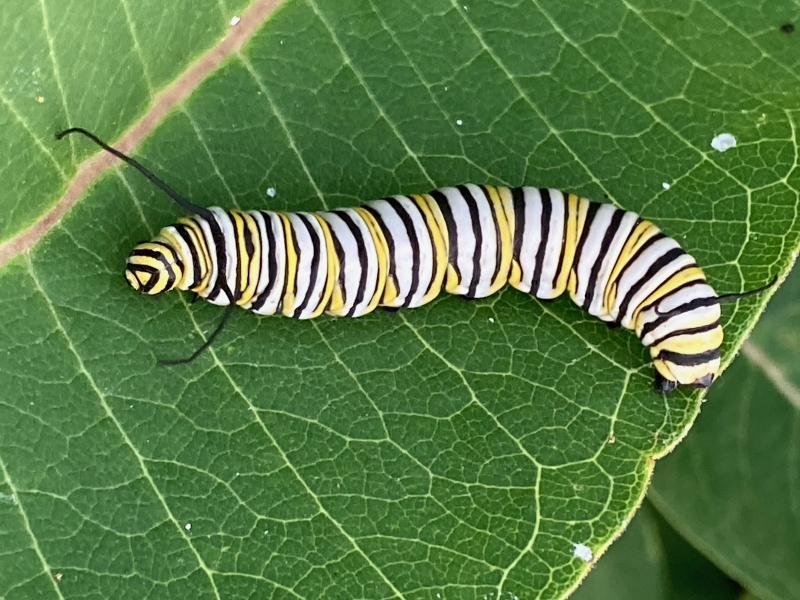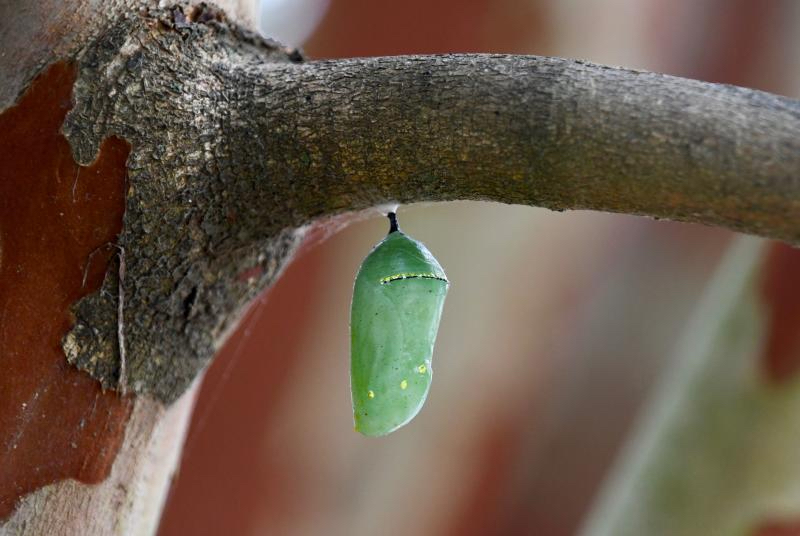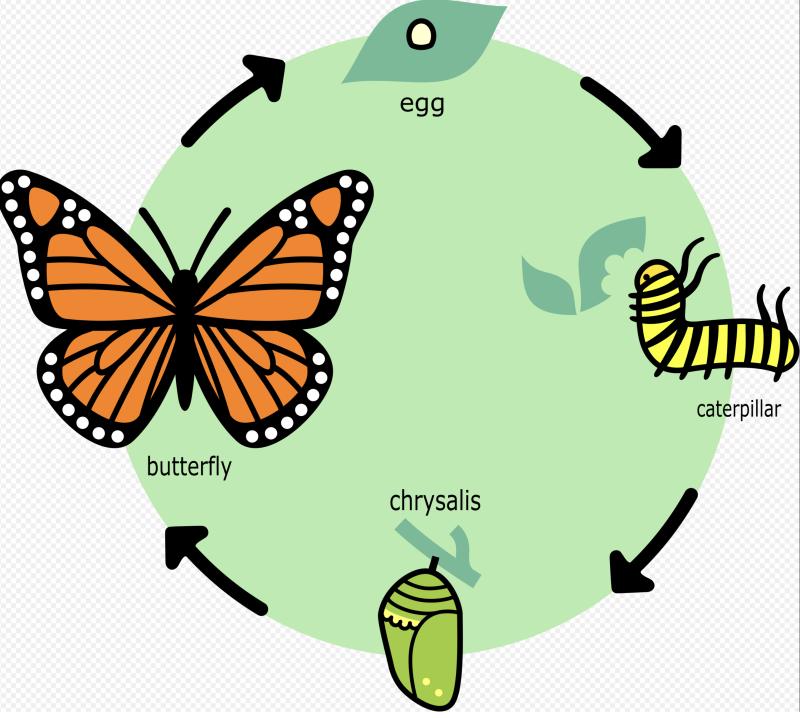Monarchs are focus of Cape Park project
Although monarch butterflies have existed for 2 million years, their numbers are rapidly diminishing to the point that they’ve almost reached endangered species status.
While there are still an estimated 100 million to 300 million monarchs, their numbers have dropped significantly over the past few years, and in 2023, they reached their second lowest population number ever.
Monarchs on eastern migration routes spend winters in central Mexico. The most popular forest where monarchs migrate only had 2.2 acres of butterflies last year, which was a decline of 59% in one year. In the late 1990s, monarchs occupied 45 acres.
Reserve at the park
Gary Liska of Oxford, Pa., and Broadkill Beach is on a crusade to help monarchs survive. He has a plan to create a one-of-a-kind Cape Henlopen State Park Monarch Reserve for migrating monarch butterflies as they take part in their annual southern 2,000- to 3,000-mile flight.
He presented the plan and provided an education of the life cycle and tribulations monarchs face during the March 9 Friends of Cape Henlopen State Park meeting.
Liska tags monarchs and grows milkweed plants to give to people in the area. He has three pollinator gardens on his property and provides a consulting service to help others design butterfly gardens.
He said the state park is on the migration path as monarchs fly from the northern states to Mexico. “This is the right place and the right time,” he said.
Delaware Bay is one of the biggest barriers migrating monarchs face followed by a crossing of Chesapeake Bay. He said it’s critical they have a feeding stopover in between the two bays.
He said the plan is to create a monarch reserve in the area of the Biden Center in the state park. It will comprise 80% high-nectar plants, including seaside golden rod, and 20% milkweed plants with a hydration station, walking path and signage.
“This is historic. No other place recognizes the unique migration of monarchs,” he said.
He said monarchs will be at the park in August, September and October.
Once work is completed on the Biden Center and the Department of Natural Resources and Environmental Control gives approval, he and the Friends will start the project.
Hopefully, this is the first step toward creating a Delaware Gold Coast with other refueling stations along the migration route, he added.
Liska said the best point of contact is the state park. He said the New Jersey Audubon Society does a great job of providing nectar flowers and tagging in the area of Cape May.
“There are no initiatives locally or statewide in Delaware, so this would connect the two capes,” he said.
He said the reserve will be a low-cost, high-impact educational area. “We don’t even need fertile land,” he added.
The first step will be to develop a path and signage followed by plantings and creation of a hydration station.
He said it’s also important to tag monarchs or locate their tags from other areas to keep tabs on the population. He said there are 14,000 monarchs tagged along the East Coast, but only about 1% of the population gets tagged.
Liska said because monarchs are tropical insects, they can’t survive or fly when temperatures are 55 degree and lower. They need to migrate south each year, and the trip can cover as many as 3,000 miles. They migrate between August and November.
Milkweed is essential
Liska said monarchs’ survival is tied to milkweed plants, which is the only food source for developing monarchs and where females lay eggs. “We have to sustain milkweed,” he said.
According to the U.S. Fish & Wildlife Service, nearly a billion monarchs had vanished from overwintering locations between 1990 and 2015 due in part to the loss of milkweed caused by the use of herbicides.
Liska said there are eight native species of milkweed in the Mid-Atlantic region.
He said anyone can plant milkweed in their garden or yard. “You will see results very quickly because they will find you because they are adapt at finding milkweed,” he said.
Milkweed plants are also declining due to climatic changes and land-use decisions that destroy monarch feeding and growing areas.
Females lay up to 400 eggs and only one or two make it to adulthood. “There are many predators out there, both manmade and natural,” Liska said.
It seems unbelievable, but Liska said milkweeds have developed defenses to keep monarchs from eating their leaves.
There are toxins in the leaves but 40% of monarchs have developed a method to avoid being killed. The other 60% don’t survive their first day after hatching.
A unique life cycle
There several generations in the monarch’s unique and complicated life cycle, Liska said. The first three to four generations of adults live for only a month before passing on their genetic material to the next generation. The last generation, born in August, is destined to migrate.
Its metamorphosis comes in four stages: egg, larva (caterpillar), pupa and adult. The process takes about 30 days.
Two weeks after emerging from its egg, a monarch has increased 2,000 times in size as a caterpillar that sheds its skin five times.
It wanders off its host milkweed plant to search for a safe place to change from a caterpillar to a chrysalis. That process takes only eight to 15 days, depending on the daytime and nighttime temperatures.
Adult monarchs emerge after two weeks in the chrysalis. This generation lives six to eight months.
Adult monarchs must drink nectar. Plants such as seaside golden rod, coneflower, aster and bee balm provide fall migrating butterflies nectar they need to fly to Mexico.
Fall cold fronts help push the monarchs south to central Mexico. March brings renewed activity, mating and a return north to lay the eggs for another first generation.
For more information, go to monarchfoodandfuelgardens.com.
























































